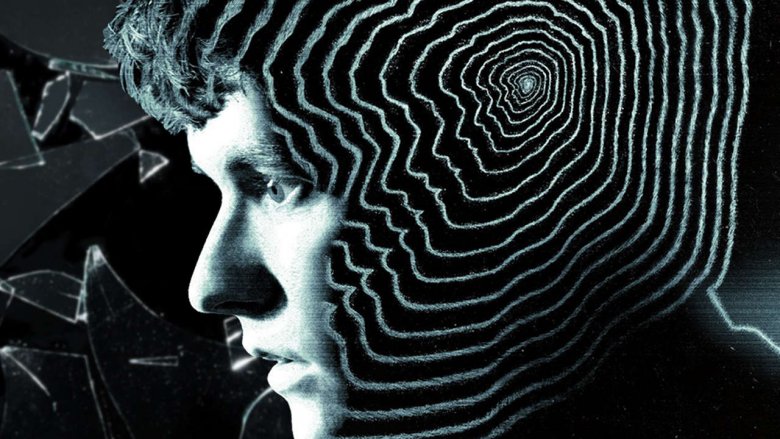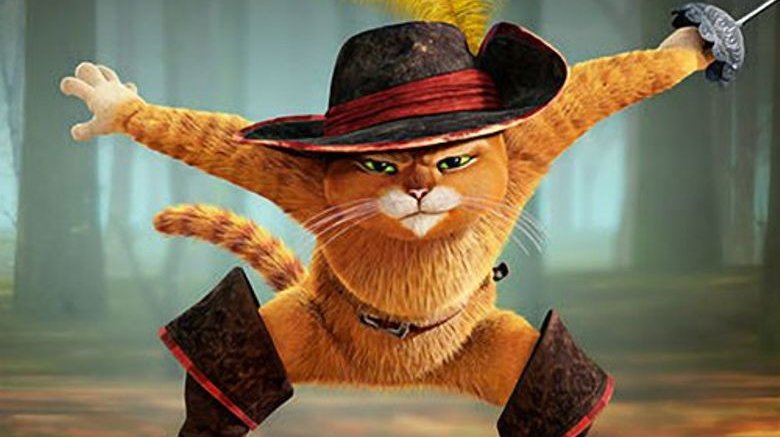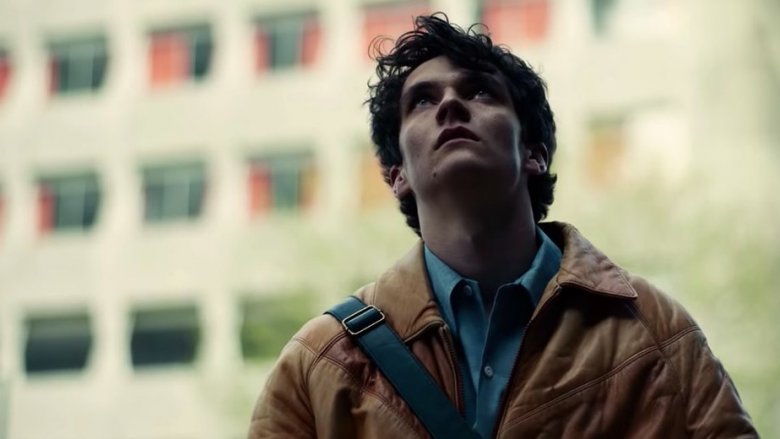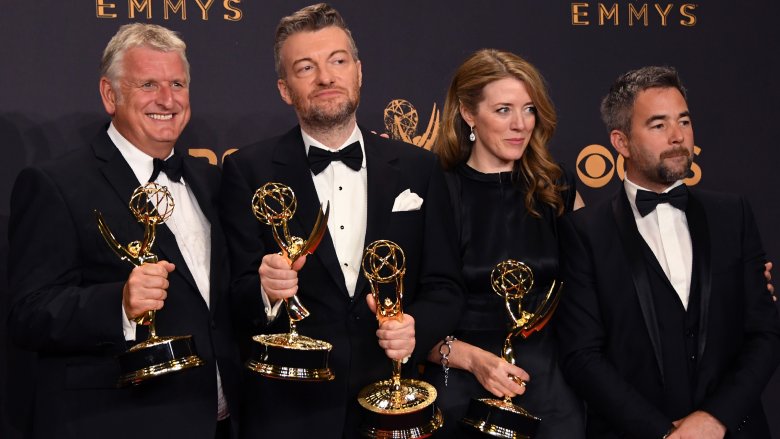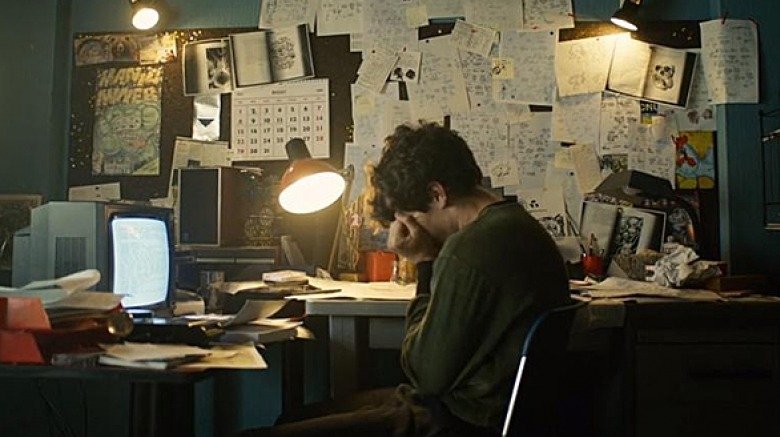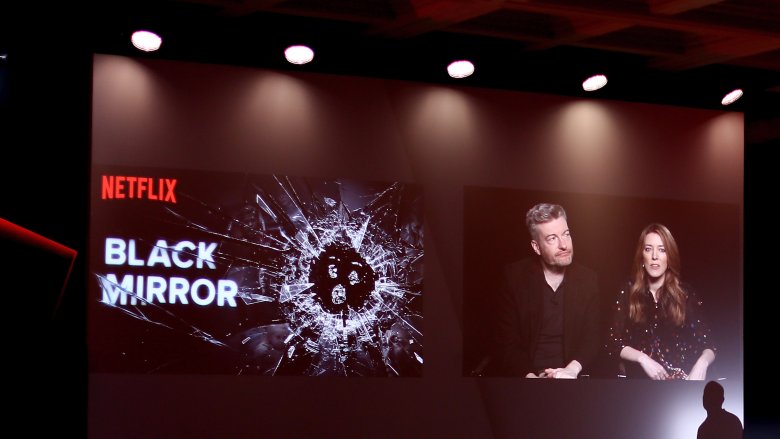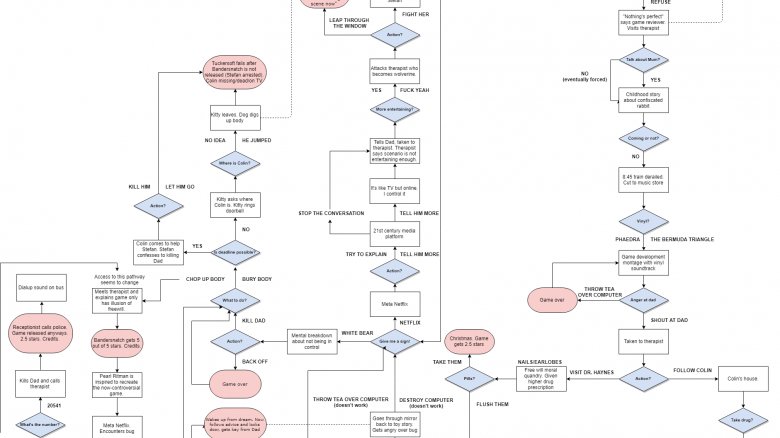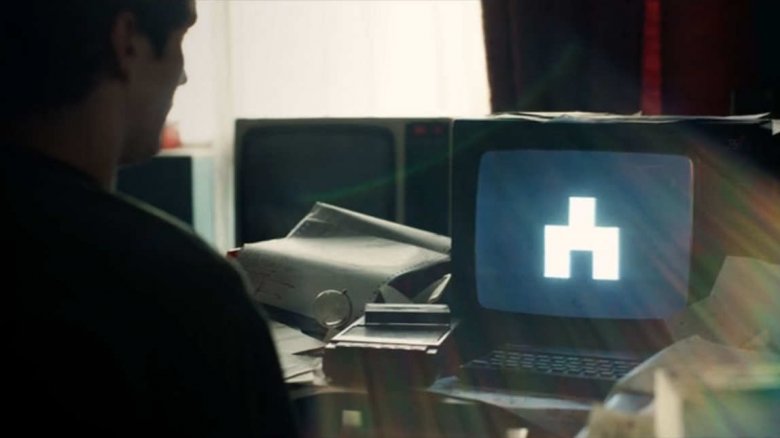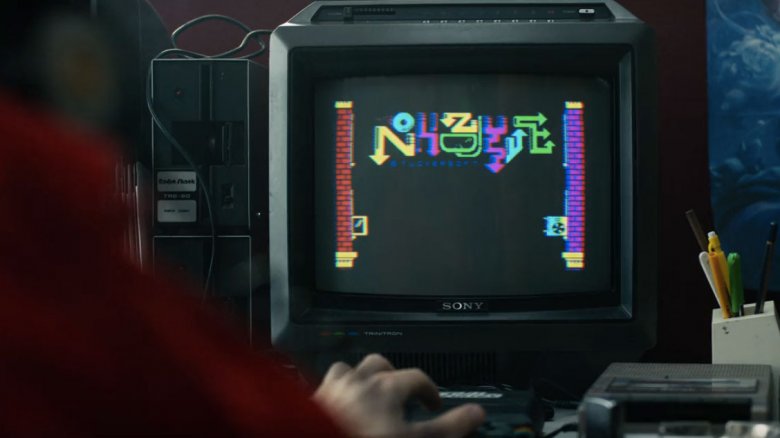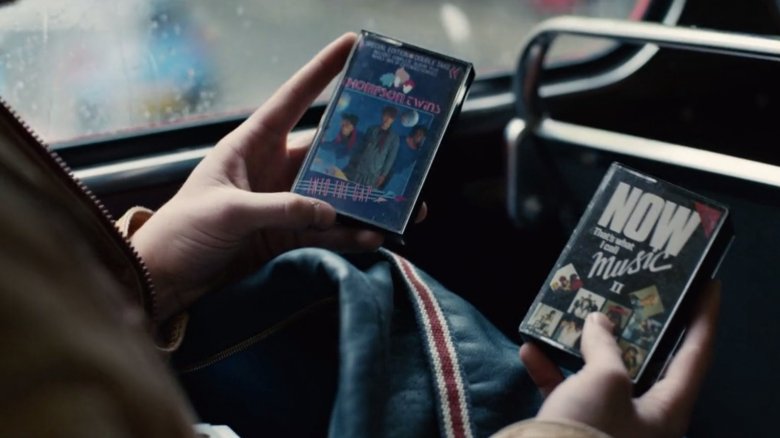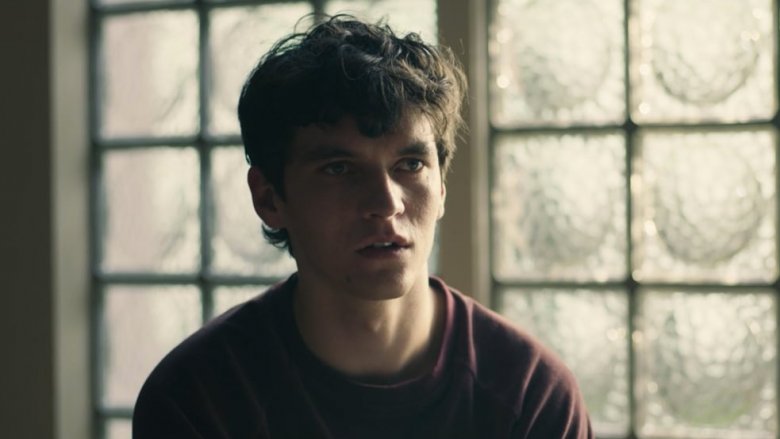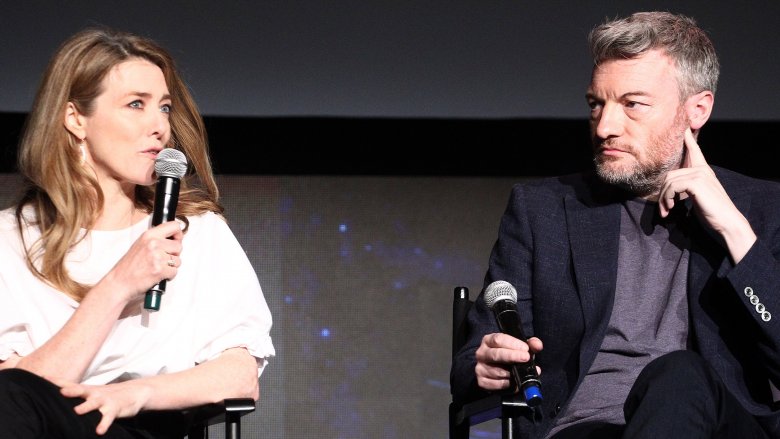The Untold Truth Of Bandersnatch
Netflix's latest installment in its Black Mirror series, Bandersnatch, was released in December 2018 in advance of an expected fifth season, and was an instant hit across the Internet, thanks to its experimental form of storytelling. A seriously dark take on old "choose your own adventure" stories, the film marries Black Mirror's trademark dystopian, technology-centric messages with a twisting, turning narrative that takes the viewer down any number of paths with seemingly endless different combinations and choices. With stars like Fionn Whitehead as the lead, Stefan, and Will Poulter as mysterious game creator Colin, it was hard for anyone browsing Netflix to not press "play" on this interactive adventure.
Fans of Black Mirror devoured the film as soon as it was released, delving through every path and ending they could find, praising the playback of the film itself and a story faithful to Black Mirror's biggest themes (in this case, the dangers of technology as well as the illusion of free will), and, of course, making as many memes and Twitter jokes as possible. Of course, with this kind of format and Black Mirror's storied history, there are plenty of behind the scenes tidbits for fans who want to learn all of Bandersnatch's secrets, from new technology to Easter eggs. Here's the untold truth of Bandersnatch.
Not quite as groundbreaking as it seems
Though many Black Mirror devotees might think Bandersnatch was Netflix's first interactive film or special, they'd be wrong about that — previous efforts simply weren't tailored to that specific audience. In the summer of 2017, Netflix premiered its first-ever interactive film, Puss in Book: Trapped in an Epic Tale, based around the Puss in Boots character from the Shrek films. Inspired by children's shows like Dora the Explorer and Blue's Clues, which encourage children to interact with the TV but don't give them any actual choices, this show put curious kids in the driver's seat. Once it proved successful, Netflix followed it up with two more interactive children's programs — Buddy Thunderstruck: The Maybe Pile (also in 2017), which was produced in conjunction with the company behind Adult Swim's Robot Chicken (and used a similar stop-motion animation format), and Stretch Armstrong: The Breakout, which debuted in the spring of 2018.
In October of 2018, the first reports of Black Mirror's intended interactive program came to light thanks to an exclusive piece by Bloomberg, which identified the then-unnamed experiment as an episode of Black Mirror's anticipated fifth season. It might not be Netflix's debut interactive program, but as the first one for adults, it was certainly a huge step for the streaming service.
Surprise! It's Bandersnatch
Though Black Mirror initially aired on Channel 4 in the UK (premiering there in 2011), Netflix acquired all past and present episodes of the show in 2015, and took a slightly different approach when it came to releasing new seasons. When season four premiered in 2017, Netflix officially released trailers and a date just a few weeks before they dropped the entirety of the season in late December of that year, giving fans a short turnaround time to speculate. With Bandersnatch, they made sure viewers had even less time to wonder.
Whether or not this leak was on purpose remains to be seen, but roughly ten days before its release, a sharp-eyed Reddit user spotted a landing page on Netflix and an IMDb entry for Bandersnatch, essentially confirming its status as a full length film. Black Mirror acolytes across the internet immediately tried to get to the bottom of this new mystery, wondering how the series could possibly pull off such a complicated feat. Then, on December 27, just one day before the film's premiere, Netflix finally released a full trailer for Bandersnatch, promising that it would premiere on the streaming service on December 28, giving fans the perfect post-Christmas surprise.
Not an overnight success
A huge creative and technological undertaking like Bandersnatch requires plenty of teamwork, and in 2017, Carla Engelbrecht and Todd Yellin (the director and VP of product innovation at Netflix, respectively) approached Charlie Brooker and Annabel Jones, the main minds behind Black Mirror from the beginning. Even though Brooker had considered using a multi-ending structure for season 3's "Playtest," which featured a man testing out a horror-themed immersive video game, his first instinct was to pass on this opportunity, worrying that it might be too gimmicky. However, the more he and Jones considered it, the more interested they became.
That being said, neither Brooker nor Jones anticipated just how difficult the concept itself would be. After writing out a relatively simple flowchart on a whiteboard, they realized that clearly wouldn't suffice, considering that they wanted the story to remember your earlier choices and allow those to affect later ones. In the end, Brooker and Jones ended up with more pathways than either of them imagined, leaving director David Slade with a 35-day shoot and over 250 video segments to supervise. In the end, with its shooting schedule and budget doubled from previous Black Mirror installments, the project turned out to be a behemoth in a way that none of the creators seemed to anticipate, and it ultimately delayed the show's season 5 premiere.
A technological marvel
Even though Netflix already had some interactive shows under its belt, it soon became clear that the technology used for something like Puss in Book likely wouldn't suffice for something as ambitious as Bandersnatch. As it turned out, Netflix needed a technology within their own system — a system that didn't yet exist.
Working with Brooker, Netflix created their own brand new technology, calling it Branch Manager. The program allows the map of any given story to be more dynamic than a simple flowchart, remembering previous choices and taking them into account as the story progresses and providing for a completely seamless transition between choices (a feature that earned Bandersnatch widespread praise). Because the program tracks choices and pathways, it ends up creating a potentially infinite list of possible variations for the viewer to experience. Brooker used the tool to deliver his script directly to Netflix, which then used Branch Manager to create the flow of the film directly without having to adhere to a strictly linear structure. Netflix has directly said that the program, which belongs to them exclusively, will definitely be used for other shows, whether for future Black Mirror installments or entirely different projects, so it looks like audiences will be seeing much more of Branch Manager as television gets more ambitious with its storytelling.
How many endings are there?
As viewers work their way through Bandersnatch's intricate plot, they can be led down any number of paths, but it seems as if the minds behind the story don't always agree on how many endings the film actually contains. Because of the technology involved, every ending will have different variations, and while both Netflix and producer Annabel Jones say there are five definitive endings, Brooker says there are "more than that," and producer Russell McLean would argue that because not every ending is a closed loop, there are anywhere between 10 to 12. Director David Slade even admits that there are "golden egg" endings, including one that's so well-hidden, he can't remember how to find it.
However, this uncertainty can make "playing" the film even more exciting, in that there's always something new for fans to discover; Brooker and Jones said as much, noting that because there are so many variations even within the "same" endings, there's no "correct" ending, since any time the film reroutes the viewer, that could be viewed as its own ending. Brooker even said that, since the film is focused so much on the idea of parallel universes, maybe there's no ending at all — although that might be too existential even for some Black Mirror fans.
One ending will be more commonly reached than others
The five endings that most viewers consider to be "actual" endings — in that the story finds some resolution — vary fairly wildly, from Stefan literally changing the events of the past to spending his life in prison, but creators say that one is more likely to be reached than any others. At one point in the story, Stefan is tasked with a truly horrific choice, and is given the option to kill his father. If the viewer doesn't immediately choose to bludgeon Stefan's father with an ashtray, they'll eventually be more or less forced to, and given yet another repulsive choice; chop up the body, or bury it? Those who go with the more sadistic "chop up" option are seemingly out of choices, and see an ending where Stefan evades police long enough to finish his game, also called Bandersnatch, but he's eventually arrested and jailed. Years later, Pearl Ritman, Colin's daughter, decides to adapt the game for Netflix, and before long, the audience is asked to start making choices for her.
Though Engelbrecht says it's not the "real" ending, it's certainly got the most Black Mirror vibe of any of the main endings, telling the viewer that even in a modern, familiar world, nobody truly has any control over their choices. It also does lead into a credit sequence, giving a sense of finality not found in every ending.
Fans immediately mapped out the story
If you've spent literally any time on the internet, it won't be surprising that the day Bandersnatch was released, plenty of online sleuths navigated their way through as many of the film's pathways as they could, desperate to not only learn the show's secrets, but to also share them with the world. As viewers played along with Stefan's journey, making him incrementally more unstable and unhinged to push him towards his next choice, several enterprising fans went above and beyond, creating multiple flowcharts that would help viewers make their way through every "major" ending the film had to offer.
Though part of the fun of Bandersnatch is finding new endings organically, at this point, many fans are aware of what pathways exist, so if you don't want to settle in for an entirely new viewing, you're in luck; with the internet's help, you can find your way to the super-meta Netflix-based ending, get on the train with your mom, find new codes to your father's safe, or any other path you've had trouble finding that you're curious about. Brooker and Jones event told The Independent that they were surprised at how quickly people found secrets within the film, clearly underestimating how quickly viewers would get hooked by Bandersnatch.
Easter egg hunt
Throughout Black Mirror's run, the show has made it clear that much of it takes place in the same universe; from subtle references scattered throughout seasons to an entire episode, "Black Museum," that's filled with artifacts from previous installments, viewers have become aware of the fact that everything within this series is connected. Naturally, Bandersnatch is no exception.
As Black Mirror's first feature-length film, Bandersnatch is littered with references that longtime fans of the series are sure to pick up. Perhaps most conspicuous are some of the names and titles used throughout — at Tuckersoft, the video game company that offers Stefan an exciting opportunity, several games in development share titles with previous episodes, including "Metalhead" (a season 4 episode also directed by David Slade) and "Nosedive" (an acclaimed season 3 episode). Even Stefan's medical care is intertwined with the universe, as viewers see when he visits Dr. Haynes (Alice Lowe), who shares a last name with the proprietor of the Black Museum at Saint Juniper's hospital, likely named for the Emmy-winning episode "San Junipero." Sharp-eyed viewers will catch references carefully placed in visible newspaper clippings and news crawls spread across several of Bandersnatch's endings, but perhaps the most relevant reference in the entire film is the use of the same glyph seen in season 1's "White Bear," which was also about a woman who seemingly has no freedom of choice.
How long is this movie, anyway?
Because the film has so many variations, there isn't really a specific run time listed for Bandersnatch. Several times throughout the winding narrative, if you hit an ending that doesn't go directly to the credits, the game will redirect you to a previous choice, giving you another chance to live out an entirely new path. Reportedly, if a viewer takes straightforward paths and isn't redirected at all, the film will only run for about 40 minutes, but if that same viewer were to keep playing with different pathways and endings, always trying a new choice when given the option, it could take several hours. The creators told Variety that the average run time is 90 minutes, but with all of the variants and footage, it's estimated that the film actually contains roughly five hours of footage.
Knowing this, viewers can make their choices carefully, deciding whether to revisit moments or accept the ending they discover. There's an option where you can simply sit back, not even touch your remote or computer, and let Netflix auto-choose every option for you (with ten seconds to make each choice, whichever one the cursor rests on will be chosen), but Brooker doesn't recommend viewing Bandersnatch this way, so keep that in mind as you decide how you want to "play."
There are a few hidden endings Netflix wants you to find
Fans went crazy trying to discover every path in the film, but for a few hidden endings, it took a bit longer. The first big hidden ending reveal came within a few days of Bandersnatch's premiere, and it could only be found after perhaps the film's most profound ending.
If Stefan (and the viewer) enters a specific code into his father's safe, he's able to travel in time and help his five-year-old self find his toy rabbit, allowing him to take a train ride with his mother (without this change, she rides the train alone, and it crashes, leaving Stefan wracked with guilt throughout his life). The train still crashes, retroactively killing the older version of Stefan, and suddenly, the film cuts back to an earlier scene with Stefan riding the bus and listening to his cassette player. Stefan pops in a tape called "Bandersnatch," which plays a sort of dial-up tone — and amazingly, some enterprising viewers figured out that the sound was actually data, managing to procure a QR code that led viewers to a secret page on the Tuckersoft "website."
Netflix even cheekily led viewers to one more hidden ending, though this was considerably more gruesome; if the viewer makes one seemingly innocuous choice twice, Stefan is murdered by Jerome F. Davies, the author of the fictional Bandersnatch book, in a final and depressing twist.
Controversy abounds
As with any entertainment phenomenon, a few controversies arose in the aftermath of Bandersnatch. First, Will Poulter, who played the enigmatic and brilliant Tuckersoft wunderkind Colin Ritman, publicly announced that he would be taking a break from social media in the wake of the film, and though Poulter chalked it up to a hiatus for his mental health, many fans speculated that it was related to criticism and bullying he faced due to the film and his previous body of work.
Shortly after Poulter's announcement, the news broke that the publishers of the original "Choose Your Own Adventure" book series were suing Netflix in a federal court, claiming that Bandersnatch not only infringes on their trademark, but due to the violent and disturbing content within it, "tarnishes" the image of the children's book series. Though Netflix reportedly tried to secure the trademark to the term "Choose Your Own Adventure," which Stefan uses in the film, that didn't pan out, and though the creators of the books acknowledge that the original series doesn't directly overlap with Bandersnatch, they did call it "misappropriation" of the term and asked for compensation to handle the "damage" to their brand.
Charlie Brooker has a lot to say about his latest creation
Thanks to Bandersnatch's unwaveringly dark tone and a plot that some critics regarded as flimsy when compared to the complex interactive element, it wasn't universally beloved — but as the creator of Black Mirror, Brooker is no stranger to criticism. He handled this latest round in a way that many Black Mirror viewers might expect, telling critics exactly what he thinks of them and disparaging disappointed viewers who simply didn't feel like making their own choices. A former games critic, he noted that even though the film often feels like a videogame, it simply isn't one, and can't be measured by the same metrics. When presented with the complaint that none of the Bandersnatch endings are "happy," Brooker replied, "have they seen Black Mirror?"
Brooker has also revealed some things that he left out of the film and other tidbits, including a few things he wishes he hadn't cut, like being able to choose between two VHS tapes or choosing to confront visitors after Stefan murders his father, and how he sees Colin as a "god" of the Black Mirror universe, indicating that we haven't seen the last of Bandersnatch's world just yet.
